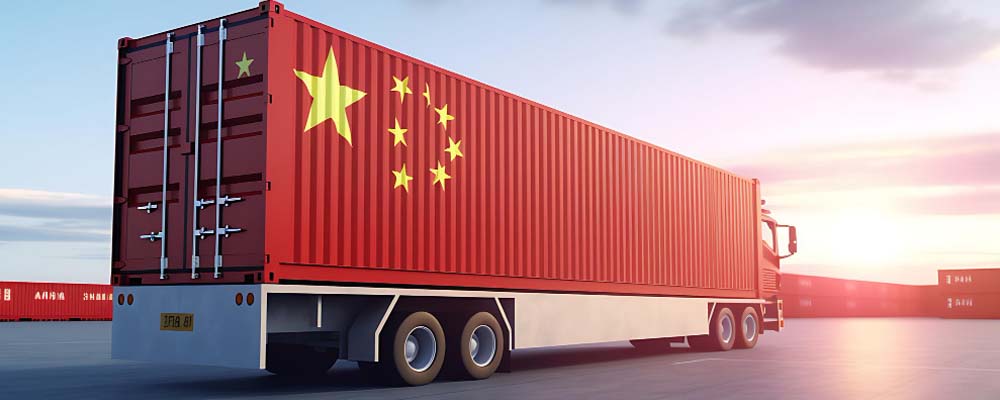
Exporting goods to China presents a wealth of opportunities for businesses looking to expand their international reach. With its vast consumer market, robust trade infrastructure, and growing demand for various imports, China stands as an essential destination for global traders. This blog post provides valuable insights for freight forwarders, logistics providers, importers, customs brokers, manufacturers, and e-commerce businesses aiming to tap into the Chinese market.
Why Export to China?
The economic growth of China has been remarkably impressive. The country’s GDP has consistently expanded, reaching new heights year after year. For businesses, this translates into a burgeoning middle class with increasing purchasing power. Exporting to China allows companies to access a market of over 1.4 billion potential consumers, diversifying their revenue streams and reducing dependency on domestic markets.
Furthermore, China’s strategic position in global trade routes makes it an attractive hub for international commerce. The country’s participation in various free trade agreements and initiatives like the Belt and Road Initiative (BRI) enhances its connectivity with other regions, making it easier for businesses to engage in seamless trade activities.
Understanding China Trade Infrastructure
China’s trade infrastructure is a well-oiled machine, designed to support the massive flow of goods in and out of the country. The country boasts an extensive network of ports, railways, highways, and airports, ensuring that goods can be transported efficiently across vast distances.
The Chinese government has made significant investments in modernizing its trade infrastructure. This includes the development of state-of-the-art container terminals, automated cargo handling systems, and advanced logistics hubs. Such infrastructure improvements not only streamline the movement of goods but also reduce transit times and costs for businesses.
The Importance of China Ports in Trade
Ports play a crucial role in China’s trade ecosystem. They serve as gateways for international commerce, facilitating the import and export of goods. China’s ports are known for their efficiency, handling large volumes of cargo with remarkable speed and accuracy.
The strategic location of these ports along the eastern coastline provides easy access to major shipping routes. This geographic advantage enables businesses to connect with trading partners in Asia, Europe, and the Americas, making China a central node in global trade networks.
 Major Ports in China
Major Ports in China
Port of Shanghai
The Port of Shanghai stands as the busiest container port in the world. It processes millions of twenty-foot equivalent units (TEUs) each year, establishing itself as a crucial hub for global trade. The port’s modern facilities and efficient operations ensure that goods are processed quickly and smoothly.
Port of Ningbo-Zhoushan
The Port of Ningbo-Zhoushan is renowned for its versatility. It handles a wide range of cargo, from containers to bulk commodities. Its strategic location near the Yangtze River Delta further enhances its connectivity with inland regions.
Port of Shenzhen
Located in Guangdong province, the Port of Shenzhen is another key player in China’s maritime trade. It is known for its specialization in handling electronics and high-tech products, making it an ideal choice for businesses in the technology sector.
Popular Imports to China
China’s diverse economy drives demand for various imported goods. Understanding what products are in demand can help exporters tailor their offerings to meet market needs.
Agricultural Products
China is a major importer of agricultural products, including soybeans, grains, dairy products, and meat. The country’s growing middle class seeks high-quality, safe food products, creating opportunities for exporters in the agriculture sector.
Consumer Electronics
With a tech-savvy population, China has a high demand for consumer electronics. This includes smartphones, laptops, tablets, and wearable devices. Exporters of electronic goods can tap into this thriving market.
Pharmaceuticals and Medical Devices
China’s healthcare industry is expanding rapidly, driving demand for pharmaceuticals and medical devices. Exporters of innovative healthcare products can find lucrative opportunities in this sector.
 Luxury Goods
Luxury Goods
The Chinese market has a strong appetite for luxury goods, including fashion, accessories, cosmetics, and automobiles. Exporters of premium brands can leverage the country’s growing affluent population to boost sales.
Machinery and Equipment
China’s industrial sector relies heavily on imported machinery and equipment. This includes manufacturing machinery, construction equipment, and industrial tools. Exporters in this category can benefit from the country’s ongoing infrastructure development.
Navigating China Import Regulations
Successfully exporting to China requires a thorough understanding of import regulations. China has specific requirements and standards that must be met to ensure smooth entry of goods into the country.
Custom Documentation
Proper documentation is essential for importing goods into China. Key documents include the commercial invoice, packing list, bill of lading, and certificates of origin. Ensuring that all documentation is accurate and complete can prevent delays at customs.
Product Standards and Safety
China has strict product standards and safety regulations. Exporters must ensure that their products comply with these standards to avoid rejection or recalls. This includes adherence to labeling requirements, quality certifications, and safety testing.
Tariffs and Duties
Understanding the applicable tariffs and duties is crucial for exporters. China imposes various tariffs on imported goods, which can impact pricing and profitability. Staying informed about tariff changes and trade agreements can help businesses plan accordingly.
 Leveraging Technology for Efficient Trade
Leveraging Technology for Efficient Trade
Technology plays a pivotal role in modernizing trade processes. Leveraging digital tools and platforms can enhance the efficiency and transparency of exporting to China.
E-commerce Platforms
E-commerce platforms like Alibaba and JD.com provide direct access to Chinese consumers. Businesses can establish online storefronts and reach a wider audience without the need for physical presence in China.
Supply Chain Management
Advanced supply chain management software enables real-time tracking of shipments, inventory management, and demand forecasting. This ensures that goods are delivered on time and in optimal condition.
Blockchain Technology
Blockchain technology offers secure and transparent transaction records. It can streamline customs procedures, reduce fraud, and enhance trust between trading partners.
Building Strong Partnerships
Building strong partnerships is essential for successful exporting to China. Collaborating with local distributors, agents, and logistics providers can help businesses navigate the complexities of the Chinese market.
Local Distributors
Partnering with local distributors who have established networks and market knowledge can facilitate market entry. They can assist with distribution, marketing, and customer support.
Logistics Providers
Working with experienced logistics providers ensures smooth transportation and delivery of goods. They can handle customs clearance, warehousing, and last-mile delivery.
Business Associations
Joining business associations and chambers of commerce provides valuable networking opportunities. These organizations offer resources, industry insights, and support for businesses entering the Chinese market.
Understanding Cultural Differences
Cultural differences can impact business interactions in China. Understanding these differences can help build stronger relationships with Chinese partners and customers.
Business Etiquette
Business etiquette in China places a strong emphasis on respect and hierarchy. Addressing individuals by their proper titles, exchanging business cards with both hands, and showing appreciation for hospitality are important practices.
Communication Style
Chinese communication style tends to be indirect and nuanced. Paying attention to non-verbal cues and being patient during negotiations can foster better understanding and cooperation.
Guanxi (Relationships)
Building and maintaining relationships, known as “guanxi,” is crucial in Chinese business culture. Establishing trust and demonstrating long-term commitment can lead to more fruitful partnerships.
 Sustainable Trade Practices
Sustainable Trade Practices
Sustainability is becoming increasingly important in global trade. Implementing sustainable practices can boost a company’s reputation and attract environmentally conscious consumers.
Eco-Friendly Packaging
Using eco-friendly packaging materials and reducing plastic waste can demonstrate a commitment to sustainability. This resonates with consumers who prioritize environmentally responsible products.
Carbon Footprint Reduction
Implementing measures to reduce carbon emissions in transportation and production processes can contribute to a greener supply chain. This includes optimizing shipping routes and using renewable energy sources.
Ethical Sourcing
Ensuring that raw materials and products are sourced ethically and responsibly aligns with global sustainability goals. This includes fair labor practices, responsible sourcing, and support for local communities.
Conclusion
Exporting to China offers immense opportunities for businesses seeking growth and expansion. By understanding China’s trade infrastructure, navigating import regulations, leveraging technology, and building strong partnerships, companies can successfully tap into this dynamic market. Additionally, considering cultural differences and adopting sustainable practices can further enhance business operations and brand reputation in China.
Ready to explore the potential of exporting to China? Start by researching the specific requirements for your products and building a network of reliable partners. The Chinese market awaits—embrace the opportunity and take your business to new heights.




 Major Ports in China
Major Ports in China Luxury Goods
Luxury Goods Leveraging Technology for Efficient Trade
Leveraging Technology for Efficient Trade Sustainable Trade Practices
Sustainable Trade Practices



